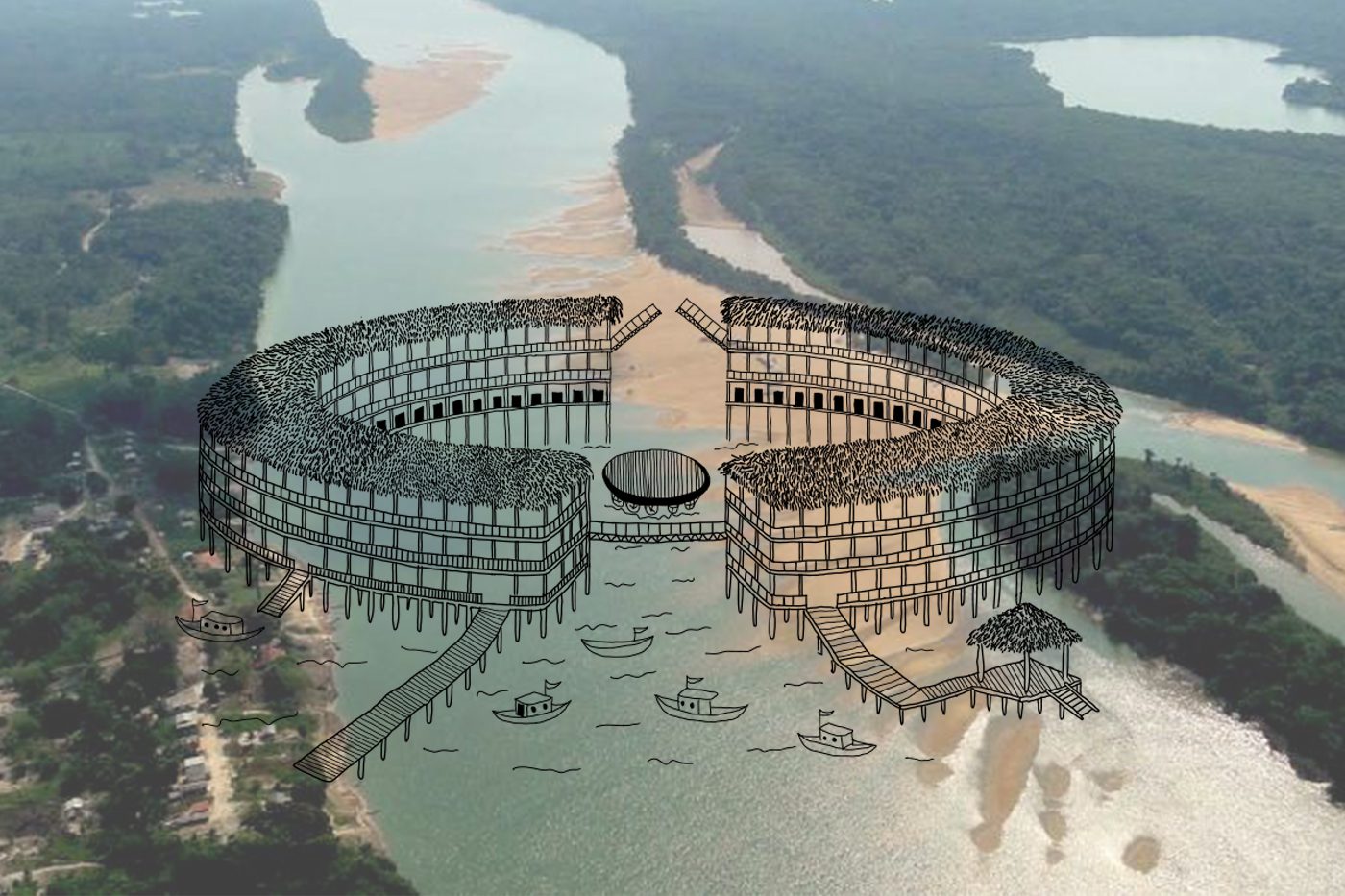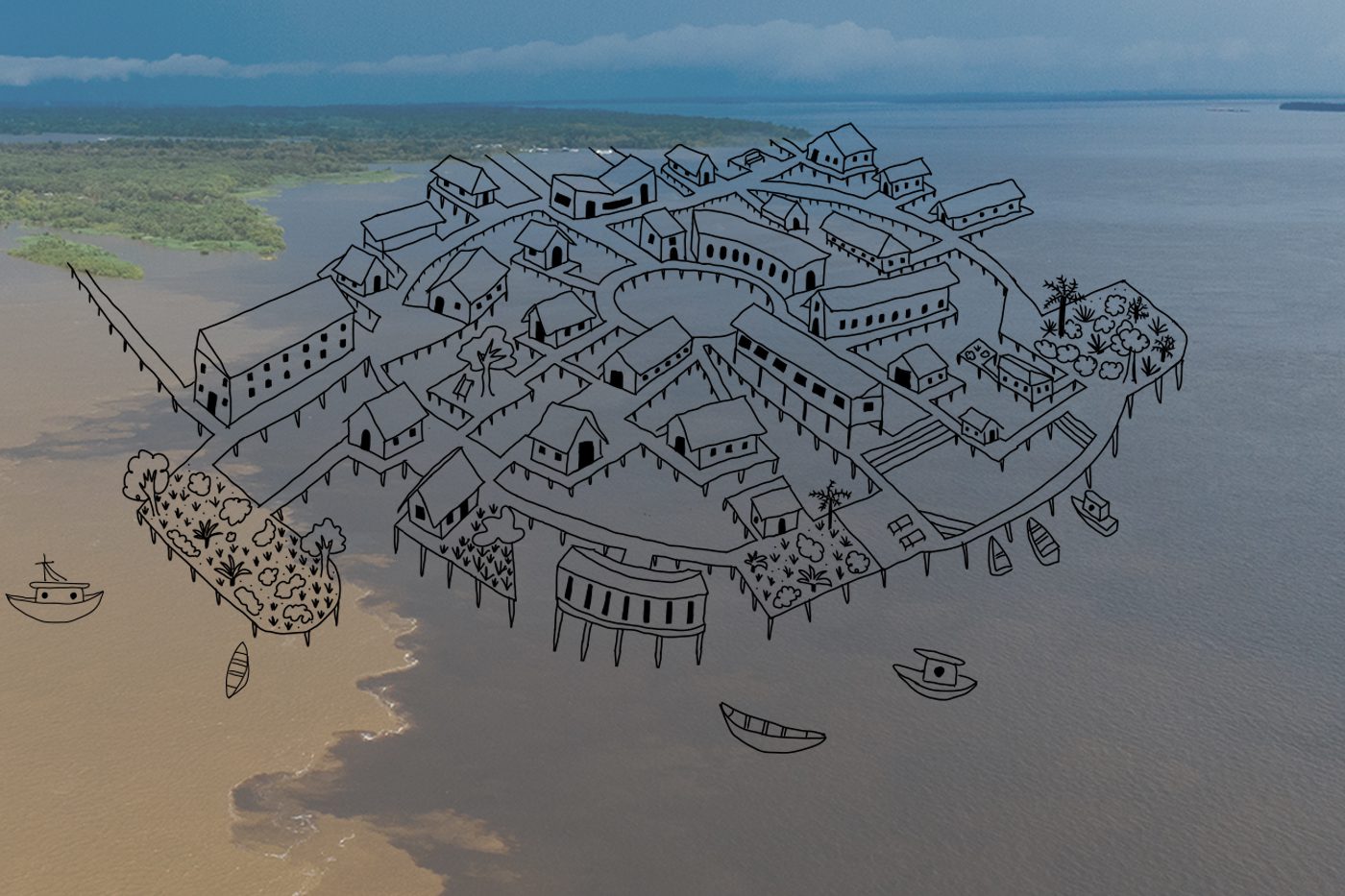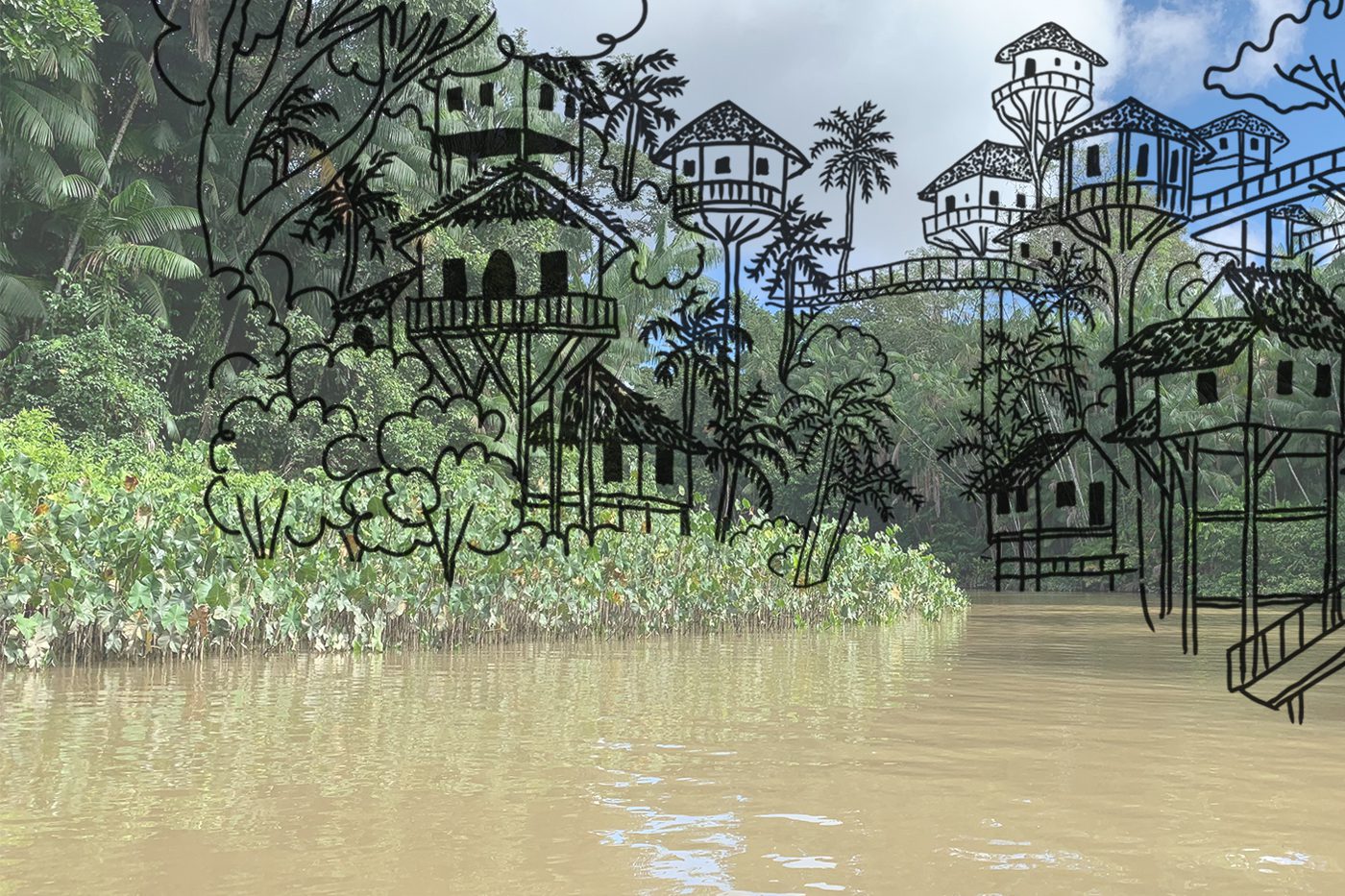Project implementation: Brazil
Project development: Brazil
Cultivating Cities is a speculative Amazonian narrative that uses imagination as a tool for designing cities, territories, and futures. Initially conceived as a book, the work is now presented as an exhibition panel. This composition materializes a journey through the Amazon basin and invites the audience to reflect on architecture and urbanism through a fictional universe.
We follow the diary of Tawa, a young woman living on the banks of the Rio Negro River who, over the course of fifteen days, travels the Amazon River between Manaós (present-day Manaus) and Mairi (present-day Belém). On the map of her journey, we can read excerpts from her diary and visit floating cities, regenerated territories, and amphibious architectures that emerge after an environmental collapse in 2030. In this panel, the text occupies the center: fictional excerpts are highlighted in white, while black text provides context.
This project stems from the desire to build cities from a space-time perspective distinct from current models. Although the Amazon is home to the world's largest tropical forest and 20% of the planet's freshwater, 76% of its 28 million inhabitants live in urban areas with the lowest per capita access to drinking water in the country. This contradiction between abundance and poverty results from exogenous urban models that are alien to local reality and knowledge. After all, we only preserve what we know; we only build what we dream of.
This is where fiction comes in as an architectural tool. By constructing the obvious, fiction opens a testing ground for projecting futures that escape the limits of the present. We propose looking to the traditional knowledge of the Amazon as mirrors that allow us to rethink our way of being, transforming the end into a new beginning.
Rather than heralding exhaustion, this presents a historical-utopian narrative in which the riverside and Indigenous city takes center stage, charting paths that enable the conception of diverse futures. This universe reconnects us to the ancestral knowledge rooted in the multiple Amazonian territorialities, calling upon it to regenerate territories and build collective futures.
This utopia emerges from a theoretical framework that articulates recent research on the Amazon, including that of Eduardo Góes Neves and Violeta Loureiro on the history of the region's occupation. It engages with the critical ecology of Danowski and Viveiros de Castro and the work of Ailton Krenak and Antonio Bispo, who revive Indigenous and Quilombola cosmologies as keys to the future. It is also inspired by the ch'ixi thought of Silvia Rivera Cusicanqui, which helps us understand coexistence and tensions in plural worlds.
These are also narratives we hear in conversations with fishermen, cooks, friends, and relatives throughout our travels and daily lives. In them, utopia appears not as a distant abstraction, but as a concrete practice of imagination and resistance, in which we, Amazonians, take on the responsibility of thinking about and designing our future.
This project is being developed by Lab Igarité, a research and creative studio situated between architecture, art, and urban planning. The Lab is an initiative of Natalia and Isabella, Amazonian architects and researchers. With backgrounds ranging from Manaus to Belém, we consider the city through its waters, riverbanks, and local knowledge. We seek to cultivate urban narratives and propose an investigative architecture, in which words and imagination become tools to reveal invisible layers, build shared memories, and invent more sensitive and just ways of living.




